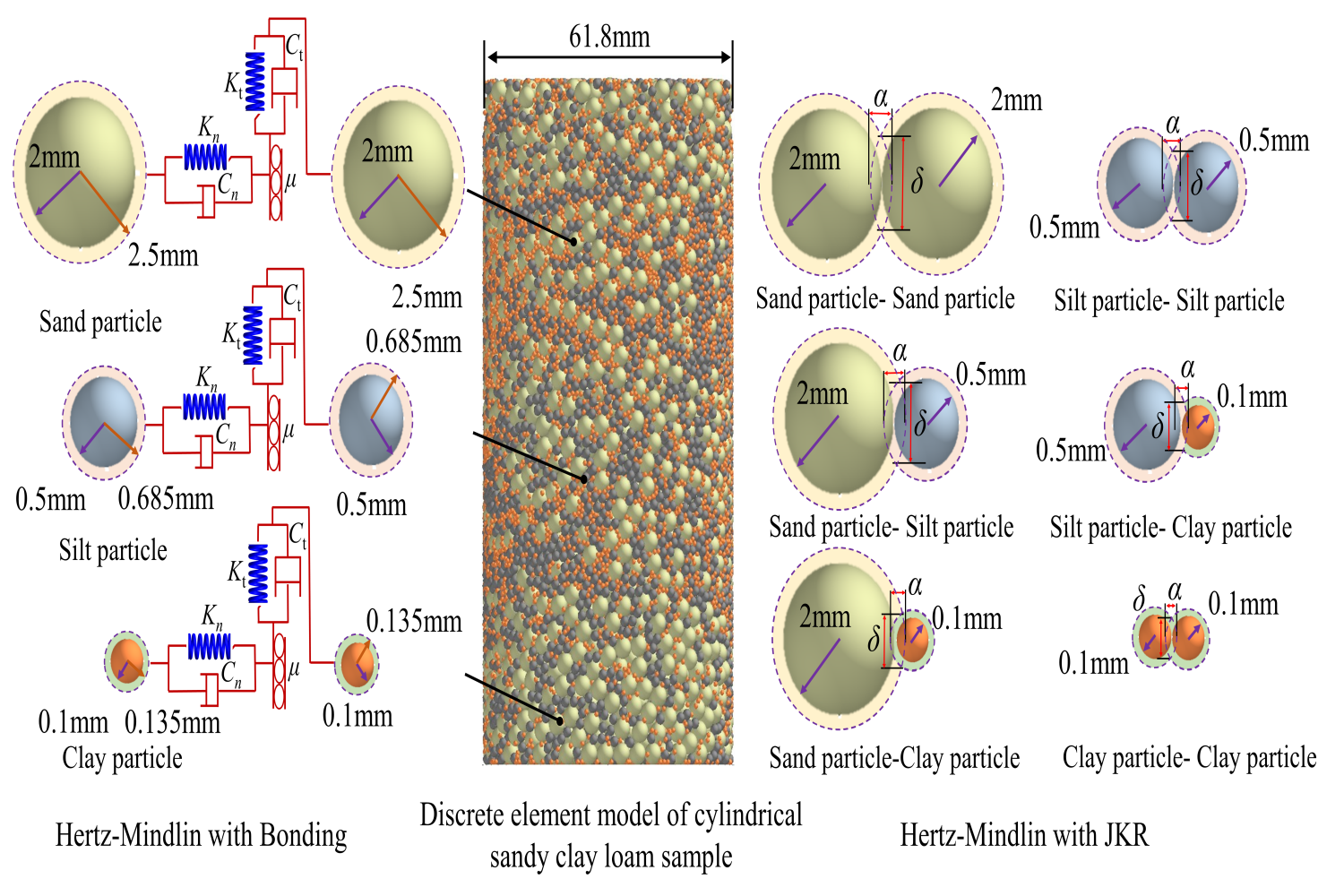南湖新闻网讯(通讯员 刘婉茹)近日,我校工学院水稻与水生蔬菜机械化生产技术与装备团队张国忠教授课题组研究成果以“Microscopic Deformation and Fragmentation Energy Consumption Characteristics of Soils with Various Moisture Contents Using Discrete Element Method”为题在土壤科学和耕作研究领域期刊Soil & Tillage Research发表。
该研究建立了5种不同含水率土壤的离散元模型,分析获取了土壤在轴向载荷作用下的应力应变特征与能量耗散规律,阐明了土壤微观形变与破碎能耗之间的影响机理。该成果可为地面机器系统研究领域中黏塑性土壤条件下耕播管收等装备的行走、开沟、碎土等各类触土工作部件的节能降耗设计提供重要理论指导。
节能降耗是地面机器系统领域研究的重要课题,尤其在南方黏重土壤条件下,土壤湿粘会使耕整和收获部件阻力增加30%以上,能耗增加30~50%,土壤变形破碎是内部能量演化并与外界进行能量传递的过程,应力应变规律和能量耗散机制是研究土壤破碎的核心内容,但目前湿粘土壤的微观形变以及其与破碎能耗间的关联影响机制不明确。为此,针对这一重要共性基础问题,张国忠教授团队建立并标定了5种不同含水率土壤的离散元模型,通过引入裂隙率和裂隙传递系数,从微观层面定量阐述了土壤失稳破碎的根本原因,明晰了不同含水率土壤在轴向载荷下的微观形变与破碎特征,从而为地面机器系统节能降耗研究提供了新思路和新方法。

基于Bonding和JKR耦合接触构建的土壤离散元模型

实际与仿真土壤试样微观形变与破碎特征
华中农业大学工学院在读博士研究生刘婉茹为论文第一作者,张国忠教授为通讯作者。本研究得到国家自然科学基金、国家特色蔬菜产业技术体系、湖北省优秀中青年创新团队等项目资助。
审核人 张国忠
【英文摘要】
Increased soil moisture content commonly leads to higher resistance and energy consumption during agricultural operations. However, the impact of moisture content on soil microscopic deformation and fragmentation energy consumption characteristics remains unclear. In this study, discrete element models of sandy clay loam with different gravimetric water contents (15.0%, 18.8%, 21.6%, 24.1%, and 27.3%) were constructed for simulation experiments using coupled contact method (Hertz-Mindlin with bonding and Hertz-Mindlin with JKR). The degree of soil fragmentation and the rate of crack propagation were investigated. The results indicated that at fixed gravimetric water content, fissure rate exhibited a pattern of slow increase, rapid increase, and eventual stabilization with increasing compression displacement, while the fissure transfer coefficient showed a pattern of first increase and then decrease. At a fixed compression displacement, the increase in moisture content led to a decrease in both fissure rate and fissure transfer coefficient. The analysis of soil stress-strain characteristics and energy dissipation patterns found that soil with a gravimetric water content of 27.3% (close to soil liquid limit) exhibited no compression yield point; at a soil gravimetric water content of 15.0%, the minimum crushing energy (Udmin) was achieved (1.32 J), with a maximum elastic strain energy (Uemax) of 1.83 J. Similarly, at a soil gravimetric water content of 24.1%, the minimum crushing energy (Udmin) was reached (2.17 J), with a maximum elastic strain energy (Uemax) of 2.25 J. The comparison between actual and simulated results revealed low relative errors (